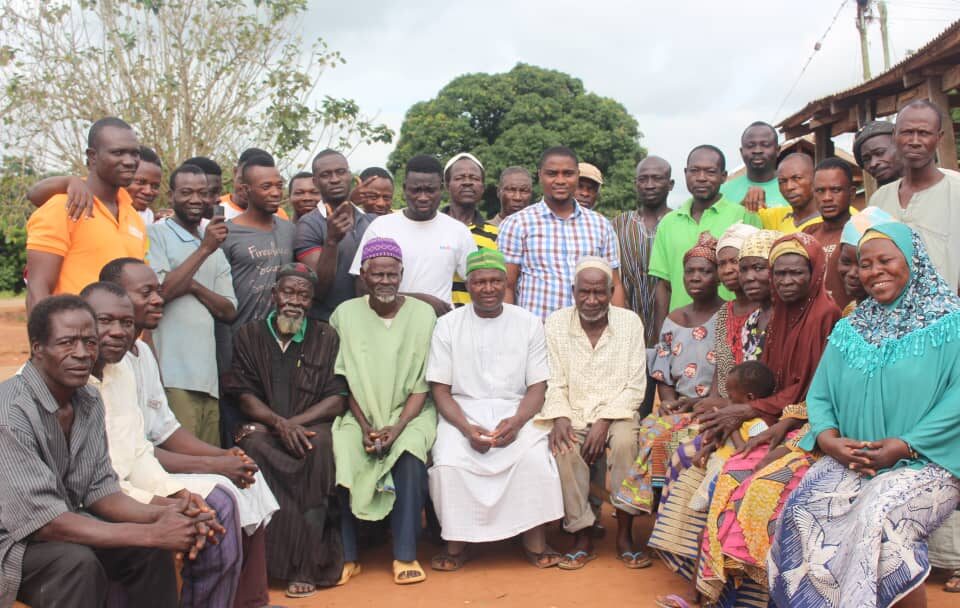Experts report the latest insights from Ghana, Ecuador, and Nepal
Forest and farm producer organizations, known as FFPOs, and the people they represent, produce 70 percent of the world’s food while using only a quarter of all global agricultural inputs. But COVID-19 and challenges of climate change are putting their longstanding systems – and the global food system – at risk.
FFPOs exist locally around the world as collective platforms for people who depend on forests and farms for their livelihoods. This makes them critical actors on the ground during times of crisis: to maintain their efficient use of resources, farmers and forest-users are highly attuned to changes in their landscapes, predicting and contending with risks.
However, FFPOs also comprise demographics that crises hit the hardest, including women, Indigenous groups and rural populations. Crises increase these groups’ exposure to poverty, food insecurity, displacement, loss of livelihood and loss of life.
Building FFPOs’ resilience to external shocks is critical for protecting the world’s most vulnerable populations, as well as for ensuring food supply and supporting local and global responses to crises. Specific examples of such resiliency were examined in a recent digital summit held by the Forest and Farm Facility (FFF) of the U.N.’s Food and Agriculture Organization (FAO), which looked at examples of what FFPOs are doing across Latin America, Africa and Asia. Here’s what they discussed:
In the Napo Province of Ecuador, a traditional production system called the Chakra system upholds ancestral practices of sustainable agroecology to achieve food security and support local livelihoods.
“The Chakra system is an important aspect of global agricultural heritage that supports the livelihoods of producers and organizations,” said Rita Irene Tunay Shiguango, a prefect of the province who helps lead the system’s strategy. “We want our customers to know that if they buy our products, they are helping to maintain the forests and support these families.”
With FFF assistance, dozens of entrepreneurs in Ecuador are now working to bring Chakra products to international markets.
Based on the ancestral knowledge of the Kichwa and Kijus communities, Chakra teaches biodiverse agroforestry practices, facilitates access to markets, promotes responsible consumption and helps to protect landscapes – in 2018, the regional deforestation was reduced from 2,735 hectares to 2,308 as compared to 2017. The system highlights the link between food, nature and ancestral Amazonian knowledge in Ecuador. Without the Chakra system, many of the products would have little connection to markets and would be affected by monoculture.
The Chakra system has been used for perhaps thousands of years. Nowadays applied by some 14,000 families of the Kichwa and Kijus communities, the Chakra system is mainly operated by Indigenous women, called “Chakramamas.” The system is about more than just production; it exists for cultural and social support for Amazonian communities.
Ghana: mobilization and action
A Ghanaian forest user takes charcoal to the market. Axel Fassio, CIFOR
In Ghana, COVID-19 is testing the livelihoods and resilience of small-scale producers of the Ghana Federation of Forest and Farm Producers (GhaFFaP). “The national lockdown on markets and transportation services presented a challenge to food availability and accessibility for both rural and urban communities,” said Victoria Adongo, executive director of the Peasant Farmers Association of Ghana and a cashew farmer.
There has been an upsurge in poverty as many farmers have struggled to cope with the government’s restrictions on mobility and commerce, and producers have resorted to selling their small assets and illegally cutting trees to support their livelihoods. The burden on women has been especially noticeable, said Adongo, in regards to cooking and caring for children.
The GhaFFaP worked with the Ghanaian Department of Agriculture and leaders of FFPOs to share essential information with farmers and support social protection programs. As a result, the Ghanaian government’s pandemic response strategy included recommendations from the federation. These included the creation of an emergency fund, improving storage facilities for excess produce, developing educational jingles for farmers about the threat of COVID-19, and equipping farmers and government officers with personal protective equipment.
Nowadays, the GhaFFaP is working on increasing its grassroots presence. For instance, it is creating a component to champion women, through gender equity and economic empowerment.
Nepal: building back greener
Sunita, a Nepalese wife of a migrant worker, prepares rice for cooking. Mokhamad Edliadi, CIFOR
Turning to Nepal, the influx of returned youth migrant workers has inspired Bishwa Nath Oli, the secretary of the Ministry of Forest and Environment of Nepal, to call for integrating them into community forestry user groups and the country’s rural economy. “Forest and Farm Producer Organizations are well-positioned to support the effective mobilization of young rural migrant workers into green economic sectors.”
Forestry accounts for only 2 percent of Nepal’s GDP, but Oli says there are signs that community-based forest management can uniquely benefit returnee migrants. The pandemic has caused a decline in Nepalese income, and Oli expects around 1.2 million Nepalese migrant workers and 700,000 migrants from India to return to Nepal.
Nepal’s Poverty Alleviation Fund has responded to these changes with a plan to create 30,000 jobs in forest-based enterprises in the upcoming fiscal year, as well as spending USD 155 million to create 150,000 jobs in agriculture and small industries.
Oli recommends forming a task force to identify the needs of young migrant returnees, design a capacity-building program, and establish a matching grant fund to support agroforestry and green enterprises. Collaboration between local community forestry user groups, regional governments and FFPOs is a building block for migrant returnees having more access to land, economic opportunities and important networks.
Resilience to future crises
The cases from Ecuador, Ghana and Nepal show that the impacts of the pandemic are different for women, Indigenous peoples and rural populations. The proposals of the Nepalese government, the collaboration of Ghana’s federation of farmers with the government, and the millennia-old Chakra system demonstrate that crises can be effectively addressed with ancestral knowledge and new innovations.
Source- news.globallandscapesforum


